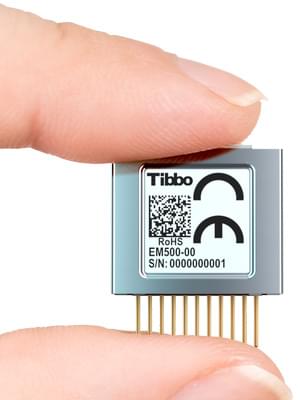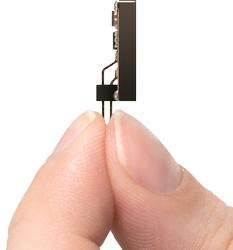IN FULL PRODUCTION BUT NOT RECOMMENDED FOR NEW DESIGNS. CONSIDER USING EM510 INSTEAD.
The EM500 is an ultra-compact Tibbo BASIC/C-programmable IoT Module with Ethernet and optional Wi-Fi* connectivity. The EM500 has one UART.
The first member of our MiniMo® family, the EM500 is designed to be used in tandem with a standard RJ45 magnetics jack. The combined footprint of the EM500 and a typical jack is only 28.5 x 18.5mm (1.12 x 0.73").
Compact dimensions, space-saving "vertical slice" form factor, low power consumption, and economical pricing make the module an excellent fit for miniature, cost-sensitive "connected" devices.
Module testing and evaluation can be performed with our EM500EV development system.
* Requires the WA2000 Wi-Fi add-on to be connected externally.








